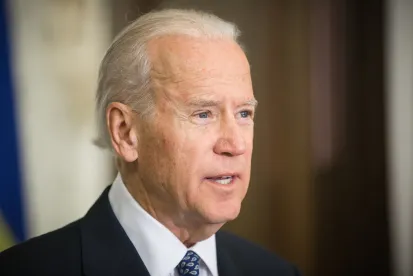President Joe Biden’s arrival at the White House in January was, as customary for any new executive branch leader, met by outsized expectations on the part of supporters and detractors alike. Among the countless areas of public policy set to be affected by the new administration, perhaps no one issue is more anticipated to be in play than energy and environmental policy.
The heightened set of expectations around energy policy began with the campaign, when Team Biden consistently placed climate change issues among its leading priorities — a trend that noticeably continued with Cabinet picks, as nominees for agencies from Defense to Transportation to Treasury cited climate considerations as key factors affecting their respective portfolios. On January 27, 2021, shortly after taking office, the Biden administration released a series of executive actions that included a stated goal of reaching a “carbon pollution-free power sector by 2035.”
Perhaps no single industry would be more critical to the realization of this far-reaching carbon-free goal than offshore wind, which has emerged in the United States over the past several years as a potentially game-changing source of clean energy generation, based on its earlier-moving success in Europe and elsewhere. In fact, along the country’s populous coastal areas, where fifty three percent of US residents reside, offshore wind presents the most viable option to build up renewable energy resources in the foreseeable future.
The industry’s significant upside potential has not been overlooked by the Biden energy team. The same late January set of Executive Orders arrived with a pledge to “identify steps that can be taken to double renewable energy production from offshore wind by 2030.” Energy wonks were quick to note that exactly zero megawatts of wind power are currently generated in US federal waters, where the Department of the Interior (DOI) exerts jurisdiction, making the double production pledge either poorly conceived or remarkably easy to accomplish, depending upon your point of view.
In reality, a significant amount of offshore wind power development is underway in US federal waters today. Some 10 projects with a potential 8000 MWs of output are currently in the pipeline along the east coast, all in need of federal approvals to continue forward. On the US West Coast, significant groundwork at the state and federal levels has been underway for years as part of a concerted push to launch a large-scale offshore wind industry utilizing floating turbine technology already deployed in Europe — a necessity on the West Coast given the sharp drop-off of the continental shelf just a few miles offshore.
Looking forward, here’s what we expect to see from a Biden administration federal policy apparatus that seems determined to maximize the potential of offshore wind in short order:
Federal Permitting: Furthest along in the pipeline, the fate of the 800 MW Vineyard Wind project off the coast of Massachusetts has been widely watched over the past few years. Viewed by many as a bellwether for DOI’s approach to assessing the impacts of offshore wind development, the project appeared to lose momentum in the course of its National Environmental Policy Act (NEPA) review process, unexpectedly finding itself subject to a Supplemental Environmental Impact Statement (SEIS) that would assess “cumulative impacts that could result from the incremental impact of the Proposed Action … combined with past, present, or reasonably foreseeable activities, including other future offshore wind activities.” DOI’s move, based on a lofty forecast of 22 GWs of offshore wind along the East Coast in 10 years, confirmed to many that agency leaders deliberately sought to slow industry growth, even as optimists countered that a successful expanded review process would better insulate the promising industry from future litigation.
The Biden administration has quickly moved to turn the page on Vineyard Wind, announcing a restart of the project’s SEIS (pulled in the waning days of the last administration for fear of a negative outcome) timed to coincide with the debut of newly minted Bureau of Ocean Energy Management (BOEM) head Amanda Lefton, who stated that “robust and timely” permitting would again become regular order. Indeed, only a month later, BOEM followed up by issuing the final EIS for Vineyard Wind. Developers in dire need of predictability should take heart at this early demonstration of timeliness — yet patience will continue to be required as a thinly staffed BOEM makes its way through the significant permit backlog.
Leasing: Beyond timeliness in permitting, the other key federal ingredient needed to instill predictability in the US offshore wind industry involved the issuance of new wind lease areas. For all the aggressive state-level renewables targets that have seeded enthusiasm in offshore wind, little can be done unless the federal government decides to hold lease sales, another action that appeared to be placed on the back burner during the last administration. Currently, developers are eyeing pending lease sales for significant additional acreage in the vicinity of the New York Bight and along the coast of California, both along the central coast at Morro Bay and further north offshore Humboldt County. Under a Biden administration intent on quickly ramping up offshore wind, creating a predictable path forward for development is an obvious priority. Look for release of a predictable, long-range leasing plan for both pending and future offshore wind lease areas as a means to restore investor confidence.
Inter-agency Cooperation: The aforementioned “all-of-government” approach to advancing renewables development stands to find real meaning in relation to offshore wind — starting at the Commerce Department, where the National Oceanic and Atmospheric Administration (NOAA) is housed. The jurisdiction of NOAA’s National Marine Fisheries Service gives the agency significant ongoing contact with commercial fisheries interests, many of whom are skeptical about offshore wind development, allowing it to play an important role in interfacing with fisheries and related stakeholder interests. The Department of Energy (DOE) has a significant role to play in advancing the industry’s future; backing research into new offshore wind technologies suited to US-specific conditions could bolster the potential manufacturing and supply chain benefits linked to the new industry. Finally, the Department of Defense (DOD) has significant say over the early planning process surrounding future wind lease area offerings; its ability to reach agreement on siting decisions in a timely manner is key to an efficient leasing process. Look for empowered climate policy leaders within the White House to enforce cooperation among these and other agencies to help streamline development.



 />i
/>i

